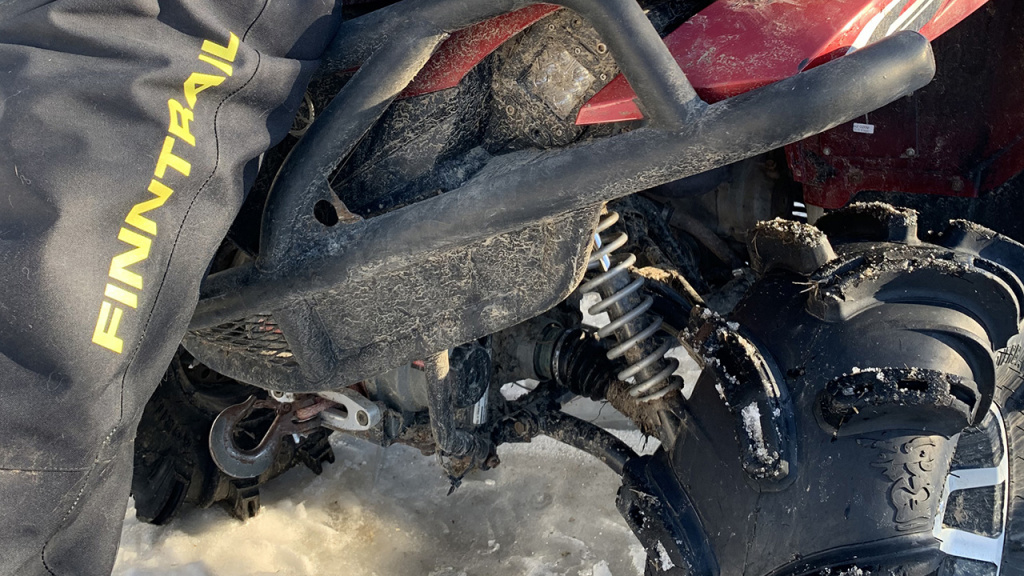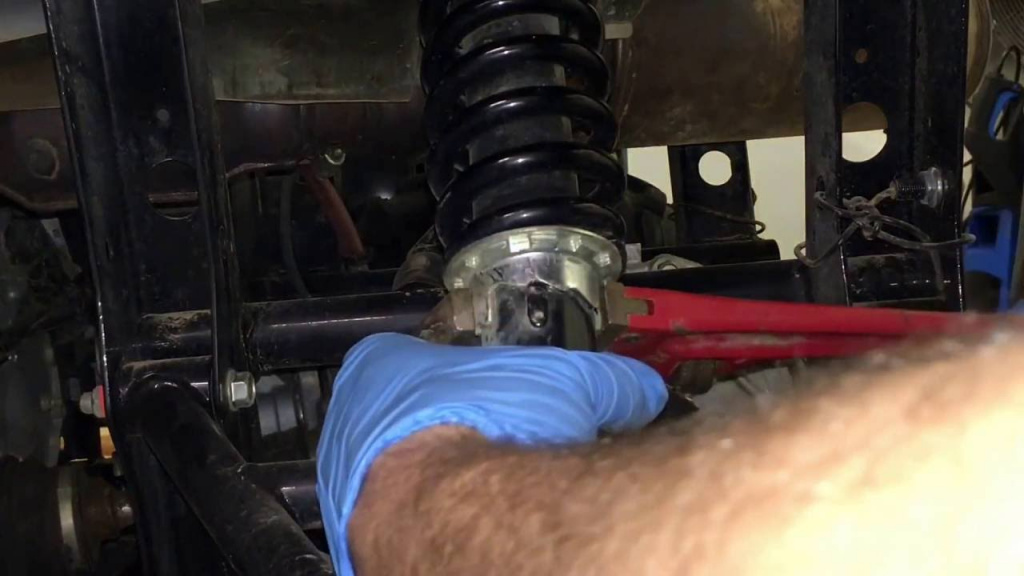How ATV Suspension Works and How to Adjust It
Adjusting the shocks on your ride is one of the easiest and most effective ways of perfecting how your ATV feels to ride.
WHY SHOULD YOU ADJUST YOUR ATV SUSPENSION?
The proper suspension adjustment can smoothen out every bump in the trail while giving you better traction and control when you need it. It’s fun to try out different suspension adjustments, and it takes almost no time at all.
First, we need an idea of how the suspension works in your ATV.
HOW DO ATV SHOCKS WORK?

The suspension system of your ATV is made up of several shocks. Each of these shocks is made up of two main parts, the spring and the shock absorber (also known as the dampener). As we’ll see, these two parts work against each other to give you the perfect ride based on the adjustments you make.
Hit a bump on the road, and the spring will compress, so you don’t feel it. The spring tension then drops the tire back down immediately, so you retain traction. Great! But if we only had springs, our ATVs would be bouncing around all over the place like a grasshopper. It’d be impossible to control.
The shock absorber acts as the counter to the spring. It has an oil-filled tube with a piston that absorbs much of the bounce of the spring, like when you push a spoon into a jar of thick peanut butter. Some of the force is absorbed, and the bounce of the spring is smoothened out.
When the spring and shock absorber are perfectly adjusted to work against each other, you’ll get a smooth ride that cancels out all the little bumps in the road but also handles high-stress situations, like going over a big jump, with aplomb. If you feel the shocks on your ATV are too soft or hard, you can adjust them.
COMPRESSION
There are two main measurements when it comes to ATV shocks. The first is compression. This is how much the spring will compress. Loose compression will feel bouncy, and when you go over major jumps, the springs will completely bottom out, making for a shudder and potential injury.
When the compression is too stiff, you’ll feel every bump in the road. This not only feels uncomfortable, but it can also make the ATV difficult to ride as you’re constantly fighting the shocks from the terrain.
When you adjust ATV shocks, you mainly adjust the compression.
REBOUND
The other important measurement in shocks is the rebound. Not every ATV suspension will allow you to adjust the rebound. Where compression is how much your springs will compress, the rebound is how fast the spring will decompress.
Stiff rebound means your tires won’t quickly return to the ground quickly enough, so you’ll lose traction. Loose rebound will return the tires to the ground too quickly, giving you a bucking motion that can make recovering from jumps feel jittery.
ADJUSTING ATV SUSPENSION

How you decide to adjust your ATV suspension will depend on personal preference and how aggressive you ride. If you’re constantly going over heavy jumps, you might choose to set a higher compression, for example so that the suspension won’t bottom out.
Exactly how to adjust the suspension on your ATV comes down to the make and model. Most ATVs these days use clickers, which is essentially a nut, screw, or knob at the top of the suspension. All you need to do is adjust the clicker, and the suspension will adjust accordingly. Older models have no clicker, and you need to adjust the shock’s threaded collar.
More advanced suspensions may have two clickers. These are known as high-speed clickers and low-speed clickers. As you might expect, the high-speed clickers adjust how much compression you’ll get at big hits like a jump, and the low-speed clicker is for adjusting the compression at low speeds. Testing the ATV on big jumps and a section of bumps will give you an idea of whether you want to loosen or tighten these compression settings.
In some cases, there will also be a rebound adjuster located at the bottom of the shocks. You can test the rebound of your vehicle over a small jump to get an idea of whether your current rebound is too loose or tight.







































